Civil engineering projects are exposed to risks that can be potentially damaging due to the cost of investments incurred in such projects. That is the case especially if factors such as the regulatory constraints, environmental factors, stakeholder attitude, and the costs of investment in such projects are influenced by underlying risks and uncertainties inherent in civil engineering projects. The proposed optional routes include one that runs through the western region linking London to Birmingham then to Manchester. Despite the risks associated with the HS2 project, cost-benefit analysis and projections indicate that the project is economically feasible. In addition to that, it is projected that the most viable option that has also been seen by the government as the most viable takes the Y shape as discussed below. Findings indicate that the HS2 routing option is economically feasible, has minimum environmental impacts, and has long-term benefits in terms of reductions in carbon emissions. The most appropriate technologies are discussed in the documents, economic projections, maintenance and operational costs are critically reviewed. Projected plans have various proposals and report over the years beginning in the year 2005 with the passing of the railway act to 2008 and beyond characterized by plans for high-speed rails demonstrating the commitment and strategies to successfully implement the HS2 project by the government. Despite deeply divided opinions about the overall impact of the high-speed rail network on the economy and other issues of concern, the need to conduct a thorough investigation about the public opinion is important in reinforcing any political decisions made. Political decisions that are made without consulting the electorate have serious ramifications on any political party and the party’s relationship with the electorate.
Introduction
The British government has been in a dilemma for some time over the implementation of a high-speed rail line to link a number of cities. The dilemma has been partly due to the political ramifications, carbon dioxide emissions, environmental considerations, conflicts with existing communication means, and stakeholder views. These are issues such as land take and project funding plans and sourcing for funds to drive the project in view of associated risks. In addition to that, technology options are a key factor in deciding the most appropriate option to adopt besides the driving force of economic gains. Based on this research, it is projected that profits are likely to arise due to the number of passengers who may opt to use the high-speed rail line. Noteworthy, emphasis to use the rail line is also based upon government policy to reduce or cut the emission of carbon dioxide into the atmosphere. Drastic cuts in the emission of gas are projected to be achieved besides economic benefits that may come along in the short, medium, and long term. Despite concerns about the impact on the environment, it is worth noting that any engineering project must come with environmental ramifications. However, contingency plans have been put in place to minimize ecological damages and other environmental disturbances that may occur during the construction process. Hence, the proposal to adopt the HS2 rail link between the cities earmarked for interconnection is an economically and environmentally sound idea. Plans have it that various proposals and reports over the years beginning in the year 2005 with the passing of the railway act to 2008 and beyond characterized by plans for high-speed rails demonstrate the commitment and strategies to successfully implement the HS2 project by the government.
Routing Options
Typically, a high-speed rail is defined as one which can accommodate locomotives with a speed of up to 250 km per hour on new rail lines and a minimum speed of 200 km per hour. An HS3 report on a proposed high speed 3 rail indicates that HS3 could achieve speeds of up to 250 mph, measuring up to demands on speed placed on a new high-speed rail (Rodrick & White, n.d).
It is widely argued that an S shape should characterize the proposed system. However, it is tenaciously argued that the proposed options, despite the economic benefits that can be realized from the optional routes have a far much greater impact on the environment than the HS2 proposal (Givoni, Brand & Watkiss, 2009).
On the other hand, the proposed route in question (HS3) passes from London to Leeds. The route begins from London, and then passes through Wakefield, to Peterborough, and to Leeds. Each of these stations and the routes have specific geographical features, land holdings, and property ownership characteristics. The option could provide trains with the optional capability to split and join at platforms, achieving line speeds of up to 400 km/h with a training capacity of up to 15 trains in one hour. Each train is proposed to carry up to 1032 passengers with an aggregate number of passengers coming to 15, 000 passengers. In addition to that, the HS3 option could incorporate a cross-platform capability to connect with the HS1 option and other communication lines, thus making it universally interoperable with other links.
The proposed route will demand that new stations be set up at each city calling upon the government to acquire land from the property holders to create space for constructing the new stations. In addition to that, there will be a need for land to create the rail platform along the HS3 proposed route. It is important to note that land take issues are critical when considering expensive development projects like the HS3 rail option.
The rationale behind the HS3 option is that the number of passengers using the route is projected to increase decreasing the demand for traveling and congestion experienced when using currently operational routes. Thus there is reason to believe that the cost of traveling from London to Leeds may be lowered compared with the cost of traveling using other operational options.
On the other hand, traveling between Wakefield to Peterborough is likely to increase the time taken to cover the total traveling distance and tome takes For that reason, integrating the HS3 option will make traveling between the mentioned cities faster as a transition to high speed will be experienced to compensate for the long distance to be covered.
The number of stops will be more frequent but the benefits outweigh the benefits that are experienced when using the HS2 option. There will be a total of four stops before one reaches Leeds when traveling from London. A critical advantage for these stops is that the possibility of linking the line with other lines will be realized and therefore, the economic impact will appreciate since, at every station, customers will be expected to make a stopover. That is in addition to the fact that less time will be spent in moving between the cities. The speed between
At the Leeds, land take issue will be largely a critical issue since the community’s involvement may spark resistance to the acquisition of land given the disturbance that is projected to be experienced with the high HS3 option Thus, a number of conflicts are bound to arise over land take issues and conflict with other routes as discussed below (Givoni, Brand & Watkiss, 2009).
The propped HS3 line could further lead to financial ripples for property holders along the proposed line as the HS3 option is projected to cause a devaluation of properties due to changes that may occur to the physical environment when the construction work commences. It is also feared that those willing to purchase any property that lies along the HS3 rail line may not purchase it at market rates and that may spark a detriment in the value of property along the rail line and eventually inspire a mass movement of people from the properties along the line.
However, the need to inspire property holders on the benefits of the Property Blight and Compensation Scheme (PBPS) and the potential for the HS2 project to pay up with prices that are unblighted and realistic to those who are covered under the terms of the (PBPS) scheme is important.
In addition to that, the potential for abuses to encroach into the scheme is rive. This will be addressed by the introduction of rules into the (PBPS) compensation scheme such as a clear definition of the loss of value, the government’s unequivocal expression of its position on the party to incur the loss of property and restore the confidence required in the market about the property value lying along the HS2 rail line. The scheme may not be subject to abuse due to the fact that the scheme is not intended o contribute to costs such as moving the property which should be the sole responsibility of the property owner. In addition to that, property owners have to show evidence of loss of property, the possibility of a conservative figure being arrived at due to the requirement that disturbances caused on families who may not be willing to move may not be compensated. Besides that, the 1973 land compensation act stipulates that due payments for landowners will have to be a year after the HS3 becomes operational. However, a top-up payment method will be used to compensate landowners at an unblighted market value. In addition to that, the number of properties for compensation projected to be disturbed will be based on calculations modeled under their distance from the line of disturbance. The degree of noise, disruptions, levels of pollution, railway disruptions, and the impact on the environment are some of the variables used to calculate the compensation offered under the mathematical model in the (PBPS) compensation scheme.
Each of the proposed stopping points or cities will need links to be developed between the proposed line and the current operational communication means. However, as mentioned above, a general rule on the compensation scheme for property holders will hold for all property holders along the HS3 line.
At Wakefield, the government will have to contend with the community and show how its intentions to preserve the geographical features and another natural habitat that characterize some parts of the city, the area and the environment upon which the rail station will have to be constructed. However, the benefits that will be experienced coupled with careful planning certainly quality such a station to be constructed there.
On the other hand, the Peterborough land take issue will also be addressed by the same compensation plan as outlined above. In addition to that, the construction of new stations at Peterborough will cause an impact on the environment that will be addressed by an engineering design that will cause minimum impact on the environment. In addition, measures will be incorporated in the design to ensure community concerns are critically addressed.
Environmental Considerations
Givoni, Brand and Watkiss (2009) emphasize that an environmental impact assessment report has revealed that a number of considerations have to be made about the environment in selecting the most appropriate route for the high-speed rail route. A comparative study reveals that the HS2 rail route has various issues to be factored in that are directly related to environmental issues as discussed below. Other issues that are strongly tied to the environment include noise and vibrations that may be generated in the process (Givoni, Brand, & Watkiss, 2009).
A significant influence on the most viable option will heavily depend on facts distilled from findings established from studies conducted on the routing options using the HS2 rail options and the new HS3 proposal (Givoni, Brand, & Watkiss, 2009).
The proposed optional routes include one that runs through the western region linking London to Birmingham then to Manchester. On the other hand, the proposed HS3 rail uses the Eastern link to connect Leeds and the Leeds Bradford region to London. That implies the HS2 option will be Y-shaped.
A critical consideration of the HS2 route indicates that the proposed route could provide direct access to the Heathrow airport an important communication channel and link to the whole country and the international community (Rodrick & White, n.d).
However, airports are characterized by carbon-intense activities such as aircraft and vehicles for moving people from one point of the airport to the railway station. The government and stakeholders will have to design policies that target the use of optional means of traveling to minimize the emission of carbon in view of the economic benefits that are projected to accrue from the use of HS2 rail links between the airport and other target destinations.
Rodrick and White (n.d) argue that an environmental impact assessment report reveals that the HS2 route demands that the wider landscape has to be significantly scarred to create a way for the construction of the high-speed rail line. In addition to that, Rodrick and White (n.d) notes that a number of features such as hedges will be lost in the process, besides losing trees and other woodlands. The assessment report shows that a number of sites, buildings, and intensive tunneling will be done under all buildings on the route in addition to intensive embankments activities and reinforcements. These will lead to the undesirable creation of a number of engineering features across the landscape. Rodrick and White (n.d) confirm in their report that a number of new engineering features such as bridges that will lead to the loss of farmlands and land holdings that will lead to the disruption of the general flow of traffic during the construction period besides leading to the impediment of the free movement of wildlife particularly due to fencing restrictions will arise. In addition to that, it is projected that HS2 will have a significant impact on farming activities to the displeasure of the farmers and the community in general. Therefore, there will be an urgent need for the government and the stakeholders to address the above issues to design approaches of mitigating the environmental impact and costs associated with the erection of the features and disturbances in the projected line of construction (Banister & Berechman, 2000).
Another consideration is the effect on the biodiversity of the region between target cities to be served by the high-speed rail 2. This is particularly due to the adjacency of animal sanctuaries to the HS2 proposed line.
On the other hand, it is argued that the potential benefits that will be realized by implementing the HS2 rail are worth investing in the project. One critical success factor is the projected consumption of carbon compared with other conventional rails. A balanced assessment report on the projected impact on the environment indicates that HS3 rail link option will have a similar environmental impact that will need to be addressed by the government and stakeholders to optimize the minimizing effect of the impact on the environment (Givoni, Brand, & Watkiss, 2009).
Opponents of the proposed HS2 rail argue that the project does not present evidence of reduced carbon emission and affirm that the project will be largely neutral to carbon emissions. The argument is analytical and tenaciously based on the fact that people may opt to use less carbon-intensive means of traveling, but the overall effect is that due to new journeys that will be created in the process, there will be new consumptions of fuel in other forms leading to new levels of carbon emissions. In addition to that, the carbon emissions will occur during the construction process of the new rail line (Menéndez, Guirao, Coronado, Rivas, Rodríguez, Ribalaygua & Ureña, 2002).
It is worth noting that, the government will have to introduce policies for encouraging people to shift their focus from the use of cars and other carbon-intensive commuting methods to the less intensive carbon method of HS2 rail link.
The government and stakeholders will also have to address the issue of costs associated with the construction of the rail link. The HS2 and HS3 proposals are capital-intensive projects and the need to critically address the costs associated with their construction in relation to minimizing the emission of carbon during the construction process is important. That is due to the projected reductions of carbon as an overall and long-term carbon reduction strategy.
It is projected that an assessment of the costs and carbon emissions will generate a similar impact by both the HS2 and HS3 options on the environment. In addition to that, HS3 will have a similar environmental impact based on a balanced environmental impact assessment report. However, the HS3 will have a superior rating compared to the HS2 proposal. It has been demonstrated by sanguine researchers that incorporating the Leeds and the Eastern corridor to the rail link will come with additional environmental benefits in the long term. The extra carbon emissions due to the extension will be compensated by significant reductions in the use of carbon-intensive traveling methods such as cars. A cost-benefit analysis indicates that the overall carbon emissions to the environment will be optimal for the HS3 link compared with the HS2 rail link.
Technology Options
Technology is an important component to consider in the rail link construction process. Both, the HS2 and the HS3 options call upon engineers, the government and stakeholders to critically evaluate and identify specific technology needs critically characterized by line speed, traction system, signaling system, and communication systems. Both the HS2 and the HS3 options can adopt similar or different technologies that specifically target operating conditions and other additional operating requirements. Stakeholders, the government, and engineers are always interested in the most efficient technology in all areas of operation outlined above (Givoni, Brand, & Watkiss, 2009).
Both routes will have to be considered in terms of the topology and other geographical features along the proposed routes. These features characterize the speed, traction, signaling, and communication technologies that are used in any of the routing options to settle on. Engineering calculations and research indicate that the European structure gauge will be adopted for the HS2 and the HS3 options to provide appropriate attractions for the rail and the locomotives. It is vital to note that according to the European Traction 96/48/EC, speeds of up to 225 miles in an hour can be achieved on the HS2 rail link option, an engineering feature that characterizes both designs. Further to that, the standard is interoperable across other European rail standards (Rodrick & White, n.d).
On the other hand, signaling technologies will be based on the European Traffic management signaling system. The signaling system is proposed to use the in-cab signaling technique with the technical abilities to resolve issues associated with visibility when a locomotive is cruising at very high speeds, over the range of 125 miles per hour. When traveling at speeds in the range of 125 miles per hour, sighting is usually impeded by line-side signals that may cause movements on the rail to be distorted (Rodrick & White, n.d).
European Rail Traffic Management System is a signaling system that is typically characterized by two critical components. One of these components is the European Control system. The ECS is a standardized system across the European Union and provides guidelines for in-cabin controls. Another component that characterizes the traffic management system is the mobile communication system. These mobile communication equipment fall into two categories. One is the onboard equipment and the other is the infrastructure equipment. The ERTMS is illustrated below.

It is important to note that the system’s objective is to ensure controlled and safe operation of the trains on the HS2 rail link across other lines. In addition to that, another objective is to ensure that the HS2 link’s carrying capacity is optimized through appropriate infrastructure management approaches.
The above considerations are in view of the high costs associated with train signaling systems and other communications equipment. Another technology option to consider in the signaling and communication system is the European Train Control System code named ETCS. The ETCS option could be considered as an option to the rather prohibitively expensive alternatives that take a lot of time and cost to plan and implement. However, it has been demonstrated that the ETCS is cost effective and is a flexible option in improving headway speeds that can be achieved on the HS2 rail link network (Rodrick & White, n.d).
Further research has yielded more evidence on the rich functionalities provided by the ETCS system on the HS2 rail link. The system provides advanced information about two trains on a similar track, advanced line supervision, and the rolling stock (Rodrick & White, n.d).
The system is characterized by a number of levels. Level one provides train detection functionalities. Once the position of a train has been detected, information is transmitted in real-time to the control center. The information thus communicated is used to provide authority to the target train to follow a specific movement pattern through a Lineside Electronic Unit. Onboard computers are then used to calculate the speed, position, and other requirements of the target train using a specialized algorithm (Smith, 2007).
Level 2 of the ETCS system uses track detection equipment integrated into an onboard radio communication system that transmits information to the Radio Block Center (RBC) as illustrated in the diagram below (fig 1). On the other hand, level 3 of the system is characterized by an onboard system that ensures the functionalities of the train are characterized by integrity. The integrated system is used to identify any authorized train movements and send appropriate data to the designated destination for monitoring and control purposes as demonstrated fig 2 below.

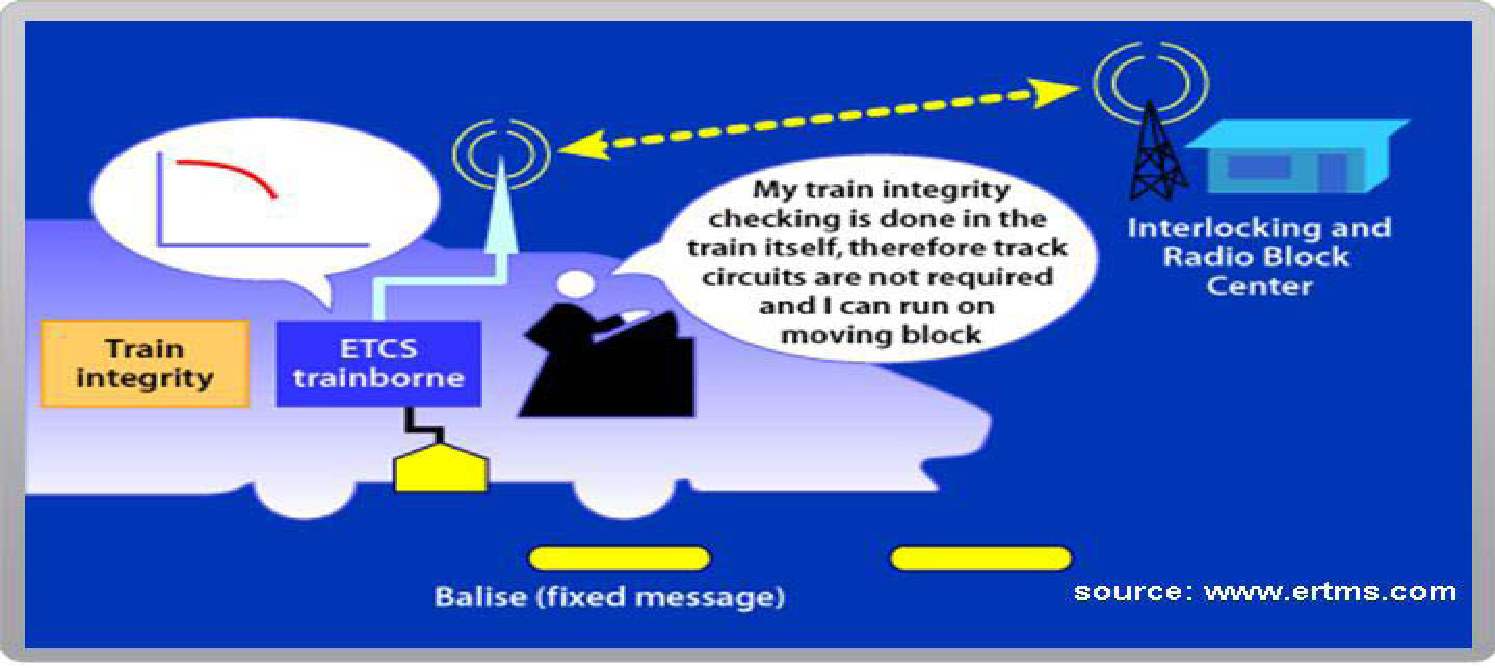
It is also important to briefly discuss the GSM-R technology that is integrated into the proposed HS2 rail network that is also a viable option on the HS3 alternative. It has been demonstrated that the technology provides rich functionalities and provides seamless functionalities on public networks, a key advantage in terms of accessibility and cost options. The architectural framework of the GSM-R system is demonstrated below.

One can note that the framework provides point-to-point communication abilities, handles signals within and outside of trains, and other supplementary communication services. In addition to that, the technology is advanced call management abilities, incorporates Advanced Call Speech Items, and is compatible with any other rail engineering specifications. Engineers, stakeholders, and other interested parties will have to do a cost-benefit analysis of using the system discussed above in relation to the areas of coverage that are outlined in the following map.
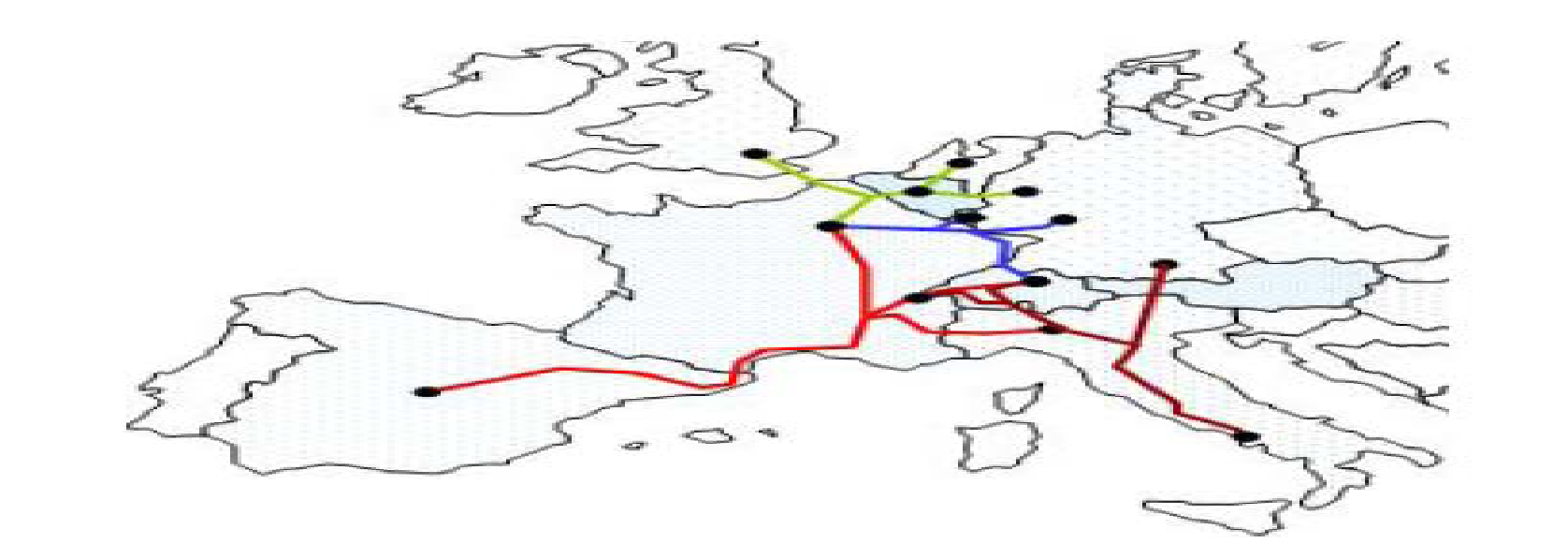
Both routing options are incorporated into the above map and a cost-benefit analysis indicates that the communication technology is appropriate for both options. London and other European Union cities are considered in the above map as being covered by the GSM-R system (Rodrick & White, n.d).
Further research indicates that traction efficiency can be achieved due to a high ratio in relation to power and weight. This is an advantage over the previous technologies and rail options.
Further considerations will have to be made based on the general design principles. That will include a keen consideration of wheel placements on the rails, movements of the bogies with special emphasis on the type of bogies, the suspension system, air suspension systems, and bogie frames as illustrated below.
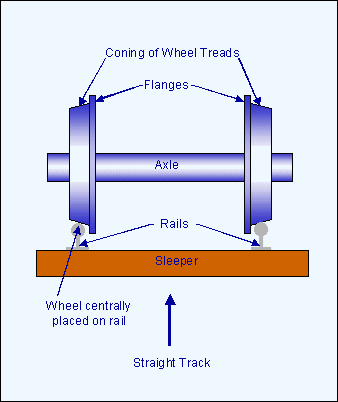
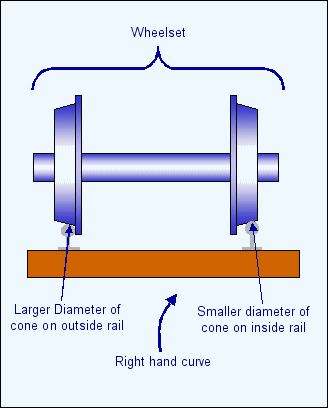

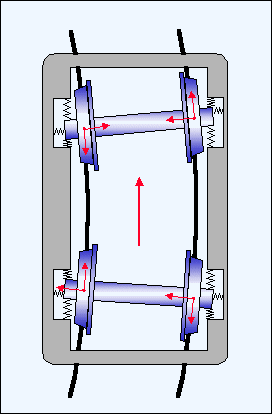
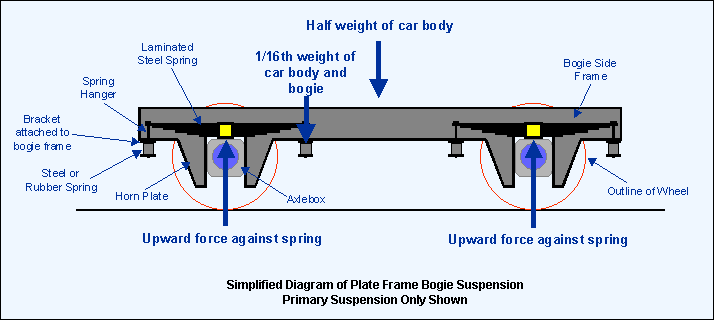
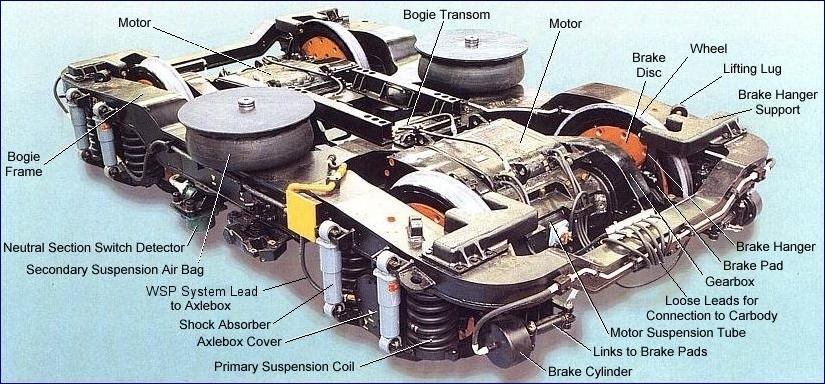
Timetable Options
It is proposed that the timetable for traveling by the train on the HS2 rail line is illustrated below. The proposed high-speed rail accommodates four trains for a period of 28 hours as illustrated in the next illustration.
Timetable

Timetable for rail capacity
Issues to consider when designing both timetables include recovery time, time spent in terminal operations, and the amount of time spent by the crew and the spre crew.
Findings indicate that both passenger and freight operations are economically feasible. Perhaps it is important to review a simulation of time spent during the trips as illustrated below.
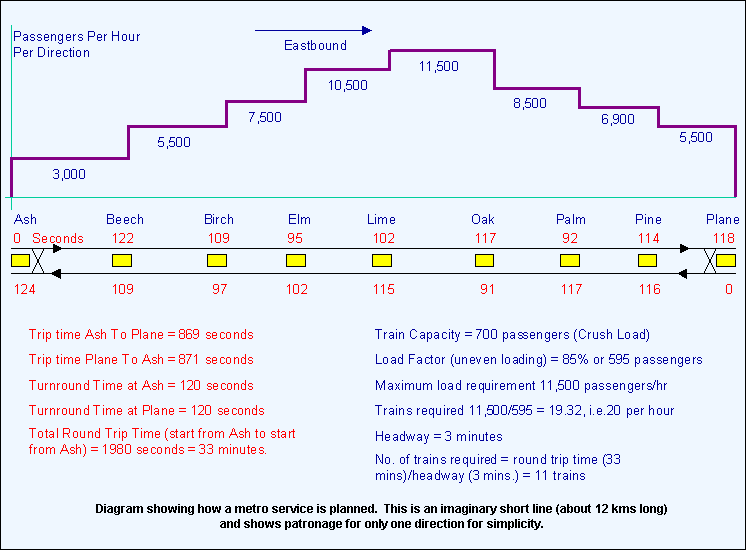
Simulation
A cost-benefit analysis indicates that the project will be economically viable based on the following passenger predictions.
Capacity simulation
The above projections indicate that passengers are bound to increase and intensify the use of the high-speed rail. In addition to that.
Clear design and development strategies particularly for the capital works are critical components to consider in the process of the proposed rail link. One unique consideration is the discussion that includes a conceptual station design for Leeds. In view of the HS2 rail link, the infrastructural link can be dominated by the maintainability costs of the trains that ply the route. Maintenance costs for the infrastructure are discussed in the next section (Rodrick & White, n.d).
Other factors to consider include the clearance of existing sites, horizontal and vertical alignment designs, resulting profiles, grading and vertical curves, clearances that provide a way for passing vehicles, and the gradual alignment for the trains. In addition to that, switches are considered in the process and their basic design principles as illustrated below.
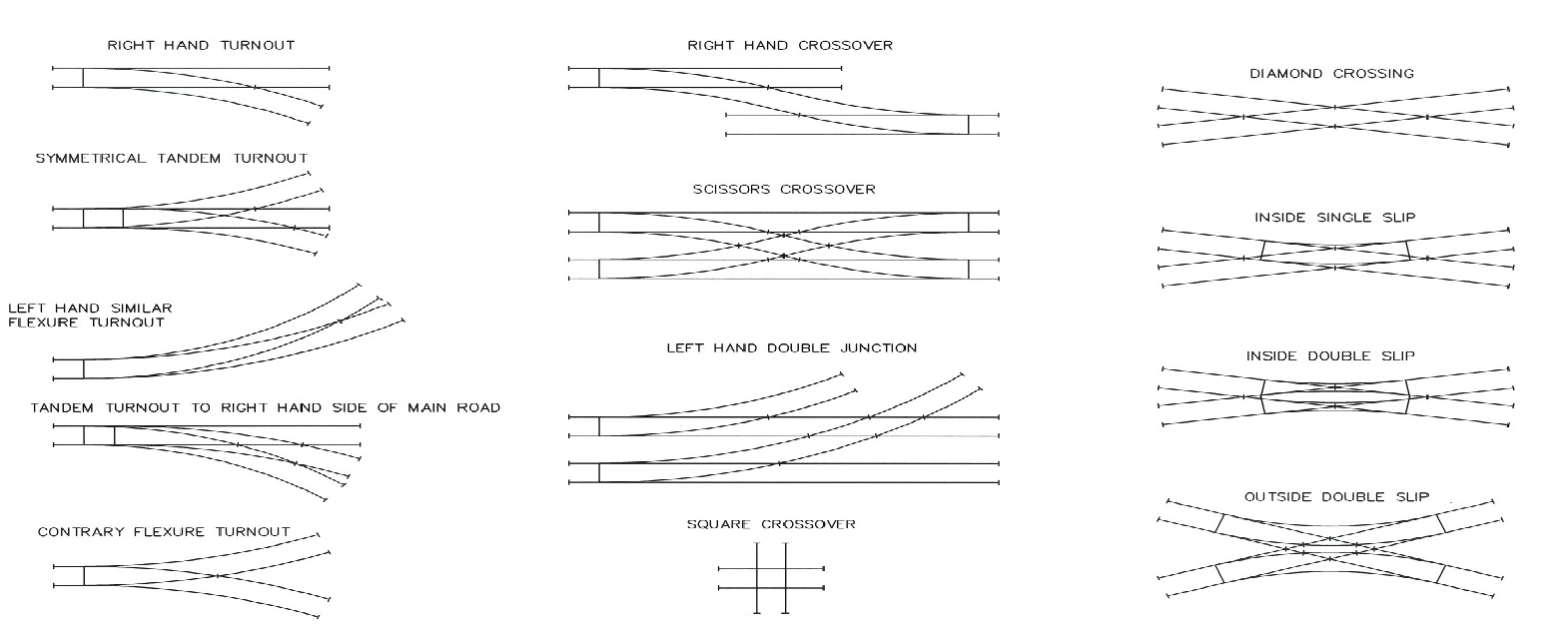
Switching configuration
The gradual switching configurations are indicated below. The design takes into account all constraints that may bear upon the high-speed rail line.
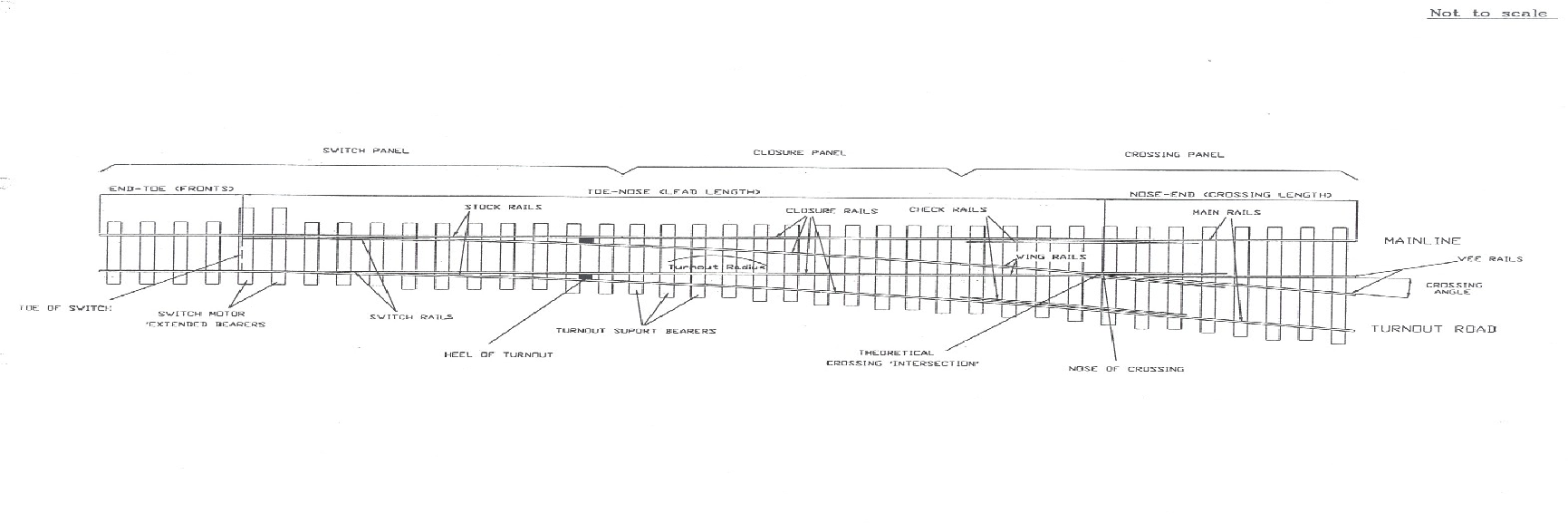
The design process culminates in the design of the target station as illustrated below.
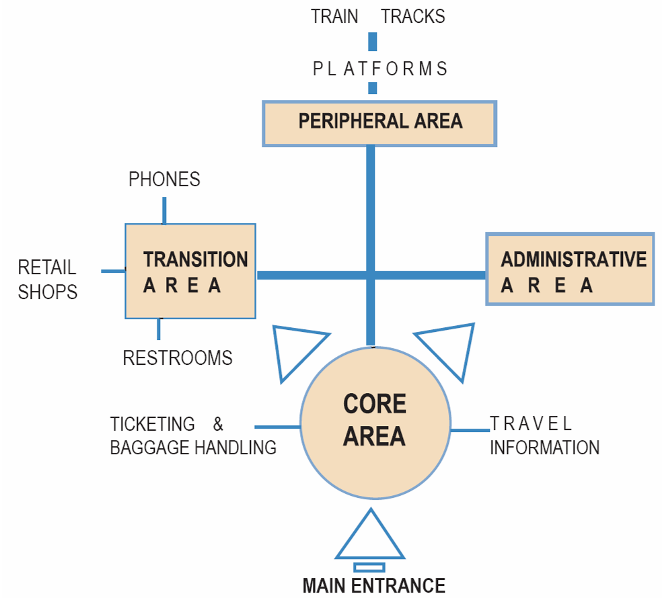
The conceptual design process used of the Leeds station
In the Leeds conceptual design, the core is characterized by among other activities, processing of passengers, transit area that houses toilets and other secondary facilities, peripheral areas and the administration block. The concept of speed and flow are also incorporated into the design. Other issues considered include capacity requirements, platform considerations, and station configurations. In addition to that, the Leeds design incorporates considerations such as security, ways of overcoming hazards, maintenance of staff, and the mobility of passengers.
As an important element of the capital works design, it is important to consider space as a critical component. That consideration takes into mind space requirements for additional tracks when a training loop as illustrated below. In addition to that, the project has to capture the sliding mechanism as illustrated in the next diagram.


However, other options to consider in the process are also illustrated in the diagrams below.


Design
The decision to use a specific technology is based on the speed that can be achieved on the rail line and the movement of people between specific destinations.
A conceptual design of the Leeds rail is based on an analysis of the geometrical flow of lines and horizontal alignments. The principles incorporated into the design include a horizontal design process with a significant influence from comfort for the passenger, mechanical alignments, and other engineering factors.
Analytically, the design and development of capital works reflected in the Leeds conceptual design are influenced by other factors such as horizontal clearance as illustrated below.

Maintenance and Operational Costs
Long-term development and maintenance costs can be calculated based on the detailed design of the HS2 rail link option and the HS3 option. It is important to consider the fact that high-speed rail links are characterized by civil construction expenditure that tends to eclipse the total expenditure on the HS2 project. While similar costs can be incurred by the construction of the HS3 option. It can be argued that in theory and practice, both options incur similar infrastructure expenditures that account for ten percent of the total costs for the rail link infrastructure (Rodrick & White, n.d).
A critical analysis of costs involved in the construction process for the HS2 routing option indicates that sub-system components and tunneling embankments and related reinforcements and reinforcement materials call for costs that add up to ten percent of the infrastructure costs. Research indicates that the total length of the HS2 project is characterized by 25 percent tunneling under buildings and other scientific and special sites that need to be conserved. In addition to that, it is clearly indicated in the research project proposal that earthworks and other engineering features mentioned elsewhere in the paper such as viaducts and other unique topological features account for additional costs incurred in the project. Analytically, a comparative study of associated costs indicates that maintenance costs particularly system costs are partial elements to consider in the process. In addition to that rail control system costs have been noted to be minimal compared to costs that can be incurred in the maintenance of the whole proposed HS2 system.
Rodrick and White (n.d) note that it is important to categorize costs into two levels. One is based on an analysis of expenditure on infrastructure maintenance and operating costs and the other category is the rolling stock costs. In addition to that, train crew and station costs are additional costs incurred in the maintenance of the whole proposed system.
Using a bottom-up derivation technique, infrastructure costs have been identified to include civil costs and tunnel costs. Other issues considered in the infrastructure cost considerations include costs incurred in the construction of target stations, control systems for trains and related equipment, and other related systems.
Benford (2001) emphasizes that in relation to tunnel costs, tunnel design and related site establishment expenditure are important elements to consider in the design and construction process. Tunnel bores that are either single or double and the technical frequencies associated with the length and size of the bores are issues to consider. In addition to that, soil embankment and tunnel boring machines are costs that are considered in the process. Therefore, significant elements to consider in the tunnel maintenance costs are tunnel rates. It is important to be reminded of the fact that risk allowances and tunneling costs account for an estimated 23 percent of the total project costs. However, costs uncertainties are characteristically inherent at this stage and must be factored into the overall maintenance costs (Akintoye, Taylor & Fitzgerald, 1998).
Other maintenance costs and issues to consider in the HS2 rail link proposal are costs associated with the maintenance and construction of stations. Pioneers in such projects recommend that capital costs can be estimated using the international Bradford standard as a benchmark against which the specific characteristics unique to each station such as Leeds can be identified and evaluated in the process. It is also possible to consider approaches and costs associated with accessing a specific station for construction and associated constraints. Besides that, the depth requirement for specific tunnels is a critical issue to consider in this case.
Stakeholders, engineers and the government, in general, have to consider civil engineering works such as demolitions that are experienced in the construction process. Other issues considered in the process include the construction of slabs for various engineering purposes and the construction of drainage patterns are issued to consider in maintenance costs.
The train control system on the HS2 rail network and the other HS3 options are costs to consider at this stage of selecting the appropriate option or route to adapt. Signaling costs that are derived from costs associated with track layouts and other associated engineering features. These elements are used to model an appropriate maintenance costs management approach. However, then need to conduct further refinements based on the certainties associated with capital costs and other related infrastructure.
The maintenance and construction package includes administration costs as modeled under a calculation based on specific percentage proportions of the final cost. These costs specifically target site supervision costs, costs incurred in testing the new and approved system and the cost of commissioning the approved system, costs incurred in training the required personnel, and the cost of procuring spare parts. On the other hand, construction and maintenance base costs will cover issues such as switches that are applied at crossing points, earthworks, as mentioned above that, includes site clearance as a regular requirement, structures such as formworks and other engineering features that demand continuous maintenance.
Akintoye Taylor and Fitzgerald (1998) argue that it is important to incorporate risks that are typical to the construction process. These risks come with associated costs. Quantitative techniques can be used to evaluate location-specific risks and other associated risks. Risk issues should be addressed in order of the significant impact likely to be caused.
Funding Plan and Protect Rationale
Civil engineering projects are exposed to risks that can be potentially damaging due to the cost of investments incurred in such projects. That is the case especially if factors such as the regulatory constraints, environmental factors, stakeholder attitude, and the costs of investment in such projects are influenced by underlying risks and uncertainties inherent in civil engineering projects. Project managers’ keenness in identifying different risks associated with engineering projects are vital to ensure accurate estimation of the impact of the risks on laid down project objectives. On the other hand, given the type of risks and the cost of investing in such projects, funding is a critical factor that can see a project succeed or fail. Therefore, the government has to put in place intensive funding plans to ensure the project is successfully completed.
Based on the 30-year time horizon illustrated below, funding is likely to come from the government and passengers. The government projects revenue growth and sustainability of the project as illustrated below.

Chart 1
In addition to that, projected plans have that various proposals and report over the years beginning in the year 2005 with the passing of the railway act to 2008 and beyond characterized by plans for high-speed rails demonstrate the commitment and strategies to successfully implement the HS2 project. The whole process of waste management, making the project compliant, to making it sustainable is illustrated below.
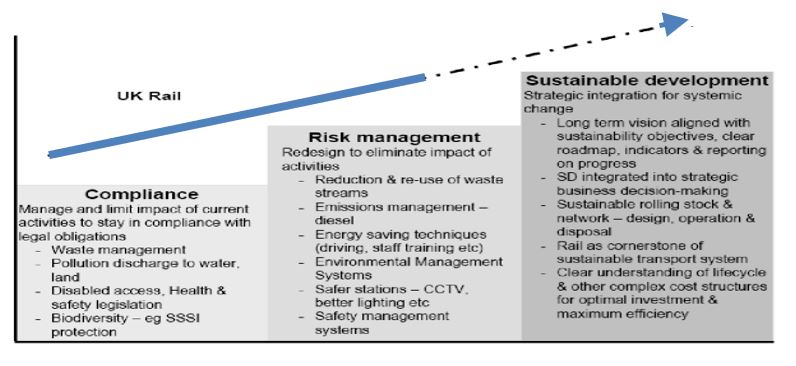
Chart 2
The strategic plan involves all short-term, medium-term, and long-term plans that have been rigorous and extensive. Funding plans are projected to be controlled by the government for the next five years. The controls will ensure system safety is to the desired levels. In addition to that, the controls will be put in place to ensure a reliable system that is able to capture rising demands from customers wanting to use the HS2 line as an economical ad fast option.
According to plans, proposed sources of funds are projected from the taxpayer support that is planned to generate 3 billion pounds a year, an enhancement program to provide 1.5 billion pounds a year, and the WP scheme as an additional funding source. Future projections are illustrated below.
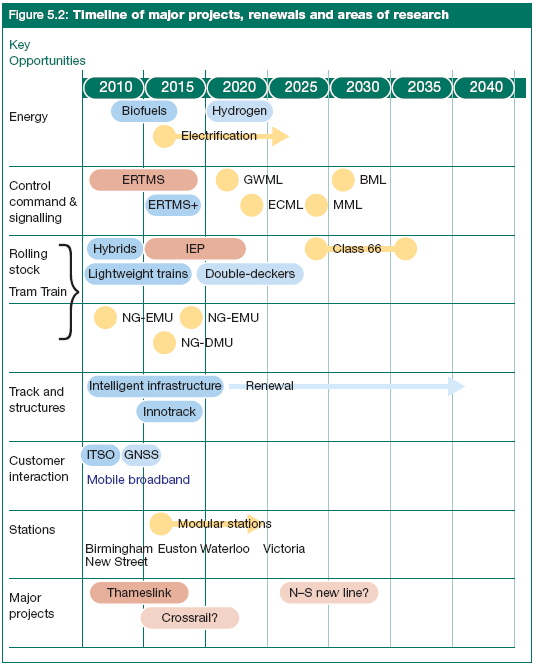
Chart 3
The rationale behind the implementation of the project is largely based on the economic benefits and development that may come from the project as discussed elsewhere. In addition to that, the government has received policy support from fro the infrastructure investment because of the capacity along the proposed route. The potential to improve links between target destinations and economic regeneration afford an investment of the kind being proposed.
Comparison With High Speed and Political Decision
The HS2 and the HS3 options are capital-intensive projects with associated risks. That is in view of the fact that communication systems play a critical role in the economic development of a nation. That is so despite the carbon emissions that could be experienced from the use of the new line. However, as argued elsewhere overall carbon emissions are compensated elsewhere by implementing strategies and policies through the government agencies and other appropriate instruments.
Opponents of the proposed and proponents of the proposed high-speed rail network (HJS2) present strong points in favor of their positions. However, a critical analysis of the government policy is that the government has settled upon the adoption of the HS2 proposal emphasizing the Y design. However, the government case is seen as a political decision in the context of the economic benefits projected to be gained as a result of implementing the HS2 option. A succinct argument projects that business relationships between businesses and business-to-customer relationships are projected to improve drastically leading to higher economic gains in the short and long term. In addition to that, economic gains are projected to be enhanced by a drastic reduction in the time wasted while commuting and benefit that result from the comfort derived by using the target rail line for leisure travels.
Another view that influences any political decision is the fact that the HS2 line will enhance and accelerate rapid economic growth in the cities that are linked to the communication network. In addition to that, the communication link will lead to a reduction in congestion on the roads and airports. The time value for traveling using the line will be an overwhelming benefit to business people and the public in general.
However, any political decision should seriously consider issues such as the volume of passengers likely to use the route if it is sanctioned for construction, the cost to be incurred to complete the project compared with similar projects in other European countries, a cost-benefits analysis, revenues to be generated from the project, and environmental impact due to the emission carbon dioxide gas into the environment. In addition to that, alternative routes have to be considered in the process and the option that causes minimum environmental harm with the best impact on revenue generation is considered for adoption (High-Speed Rail, 2010).
Noteworthy, however, are implications spanning the number of cities to be served by the HS2 network, the impact of the high-speed rail on the economy of the nation and the target cities, and the environmental performance of the high-speed rail to adjacent areas and cities. Despite deeply divided opinions about the overall impact of the high-speed rail network on the economy and other issues of concern, the need to conduct a thorough investigation about the public opinion is important in reinforcing any political decisions made. Political decisions that are made without consulting the electorate have serious ramifications on any political party and the party’s relationship with the electorate.
Therefore, it can be affirmed that careful consideration has to be made when the decision to make a political announcement on the overall effect of implementing the project on the population and other interested parties is made. Interests of all parties to the proposal should be carefully evaluated and independent research conducted to reinforce any decision made about the possibility of adopting or rejecting the proposed HS2 line (Akintoye, Beck & Hardcastle, 2003).
Conclusion
Based on the above discussion, the option to adopt the new high-speed rail technology cannot be disputed. Serious considerations on the impact of the HS2 option based on an environmental impact assessment report reveal that, like any other engineering project, a number of engineering features have to dot the line of construction. In addition to that, it is clear that disturbances have to occur along the constriction line. It has also been evidently noticed from the above discussion that emissions of carbon dioxide are bound to increase in the shorter term, but in the longer term, the overall effect on the emissions of carbon dioxide will be minimized. That will be in part due to the government policy on communication and the use of tools such as cars to move between destinations. It is important to note that grand engineering projects like the HS2, despite the risks that are associated with them, are bound to come with economic benefits that justify the option to use the high-speed rail line. Objectively, the benefits include forecasts that indicate rapid increases in the demand for traveling that will be facilitated by development opportunities brought about by the HS2 line and shortened time of conducting business to business transactions. In addition to that, the commuter time between stations will be reduced in the process translating the impact to the overall effect on fuel consumption, particularly oil that is a scarce commodity. Oil is seen as an environmental disaster as it is the key source of carbon dioxide gas that causes greenhouse gas effects. Further research indicates that technology options are diverse but the most appropriate is an option for the proposed rail link is discussed above. A critical analysis of the government policy is that the government has settled upon the adoption of the HS2 proposal emphasizing the Y design. However, the government case is seen as a political decision in the context of the economic benefits projected to be gained as a result of implementing the HS2 option. A succinct argument projects that business relationships between businesses and business-to-customer relationships are projected to improve drastically leading to higher economic gains in the short and long term. In addition to that, economic gains are projected to be enhanced by a drastic reduction in the time wasted while commuting and benefit that result from the comfort derived by using the target rail line for leisure travels. Any political decision should seriously consider issues such as the volume of passengers likely to use the route if it is sanctioned for construction, the cost to be incurred to complete the project compared with similar projects in other European countries, a cost-benefits analysis, revenues to be generated from the project, and environmental impact due to the emission carbon dioxide gas into the environment. In addition to that, alternative routes have to be considered in the process and the option that causes minimum environmental harm with the best impact on revenue generation is considered for adoption. One important point to consider is the willingness of the public to support the new technology and use it, a tool that will make the project economically viable. However, people affected by the rail line will have to live with the fact that technologies come with unavoidable disturbances on the environmental and other physical features.
References
Akintoye, A., Taylor, C. & Fitzgerald. 1998. Risk Analysis and Management of Private Finance Initiative Projects. Engineering, Construction & Architectural Management, 5 (1), pp. 9–21.
Akintoye, A., Beck, M. & Hardcastle, C. 2003. Public-Private Partnerships: Managing Risks and Opportunities. Blackwell, Oxford.
Banister D., Berechman J. 2000. Transport investment and economic development. UCL Press, London.
Benford, T., 2001. Probabilistic Risk Analysis: Foundations and Methods. Cambridge University Press; illustrated edition edition The Journal of Political Economy, 93 (3), pp. 488-511.
Givoni, M., Brand, C. and Watkiss, P. 2009. Are Railways ‘Climate Friendly’? Built Environment, 35(1), 70-86.
High Speed Rail, 2010. Department for transport. Web.
Martín, J.C. and Nombela, G. 2007. Microeconomic impacts of investments in high speed trains in Spain. Annals of Regional Science, 41, 3, 715-733.
Menéndez, J M; Guirao, B; Coronado, J M; Rivas, A; Rodríguez, F J; Ribalaygua, C & Ureña, J M. 2002. New high-speed rail lines and small cities: locating the station, in Sustainable City II: Urban regeneration and Sustainability, Advances in Architecture Series, vol 14, pp. 811-820.
Rodrick, S., & White, C., n.d. High Speed 2 Railway. Web.
Smith, N. J., 2007. Engineering project management, Oxford, Blackwell.